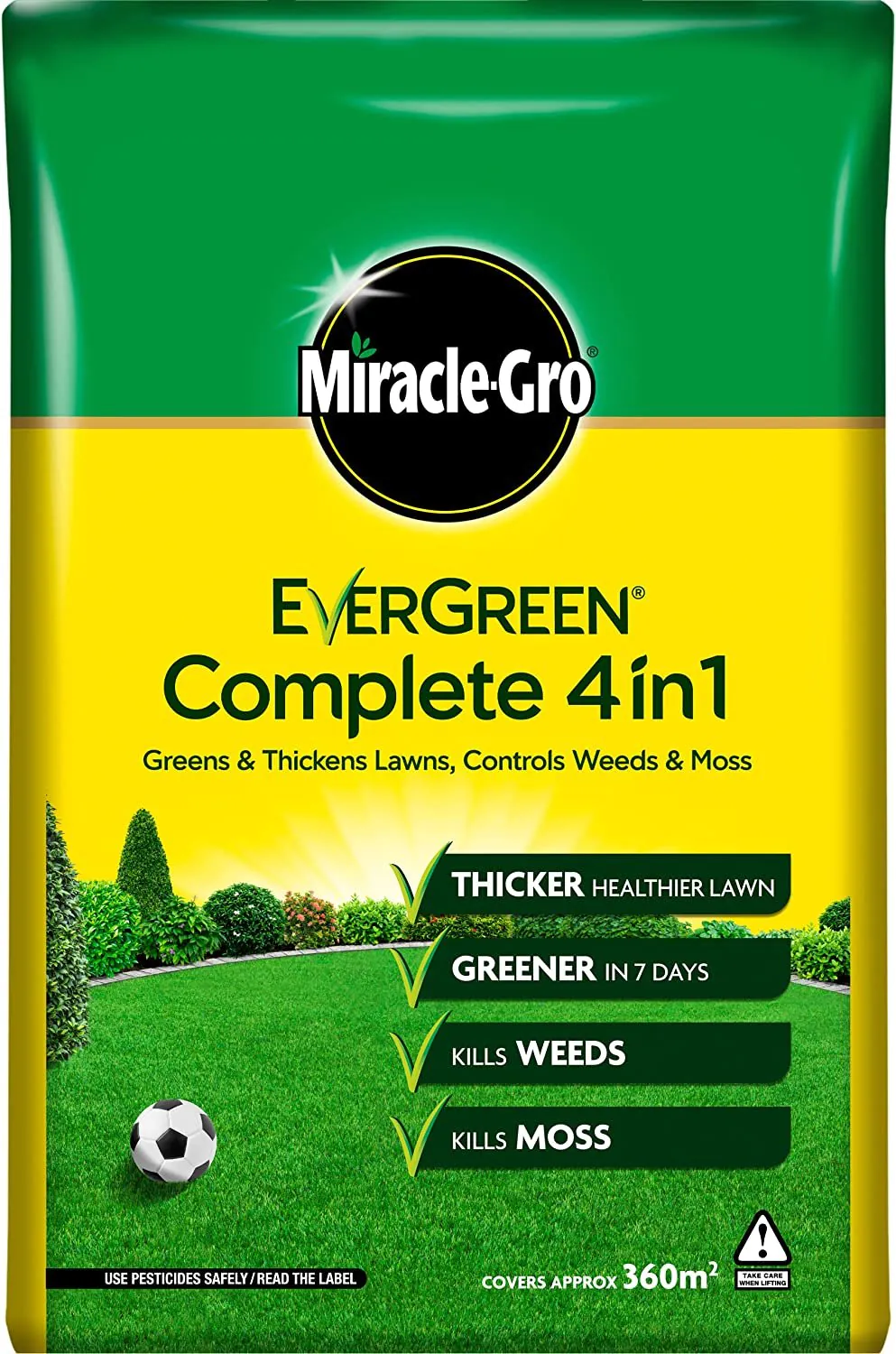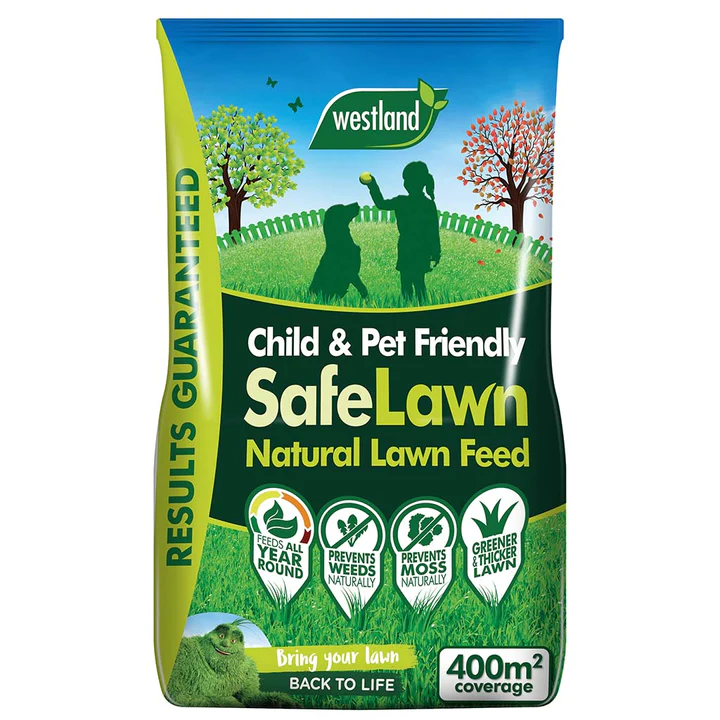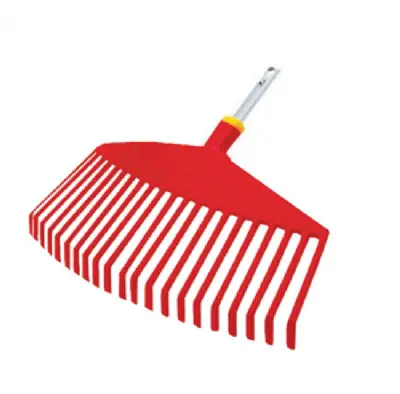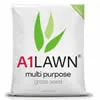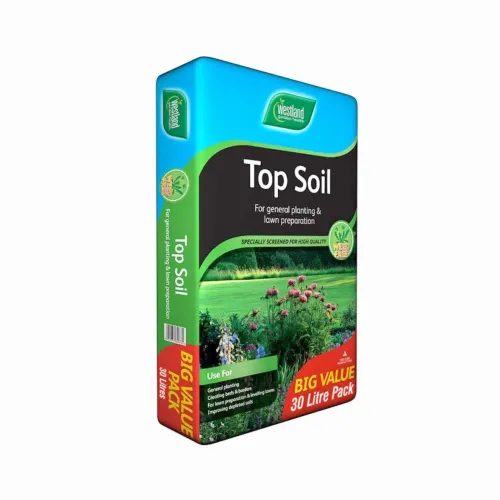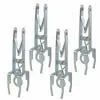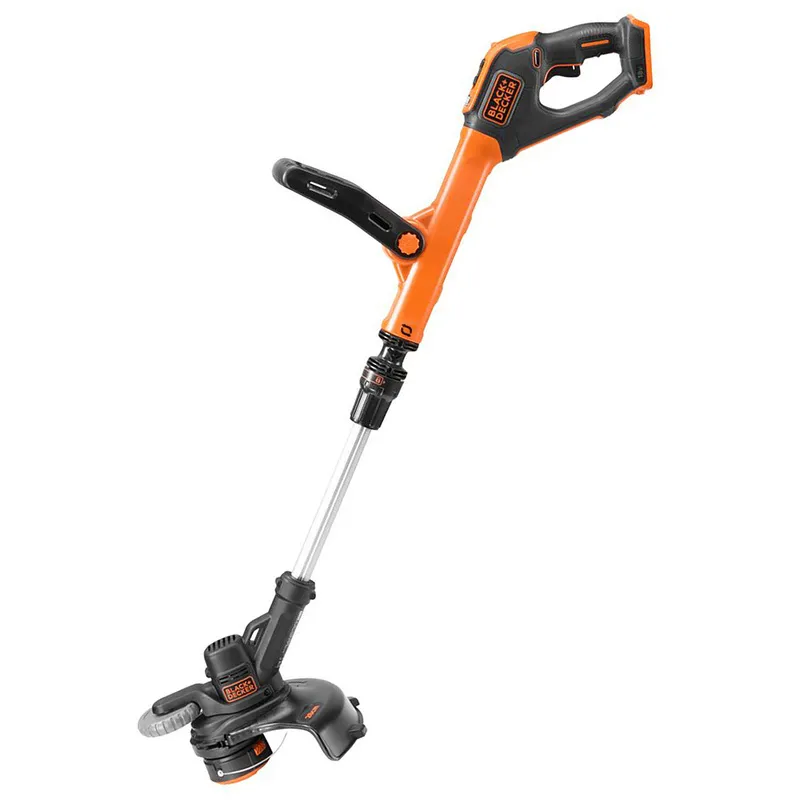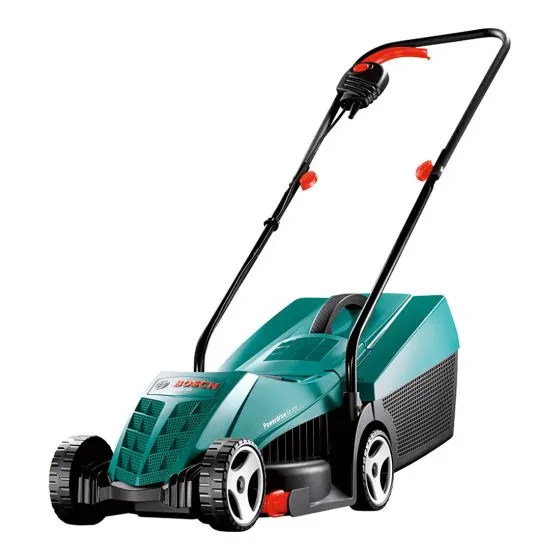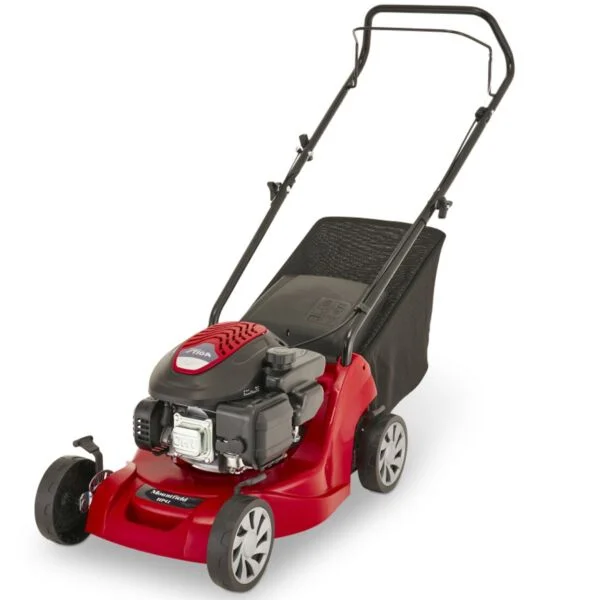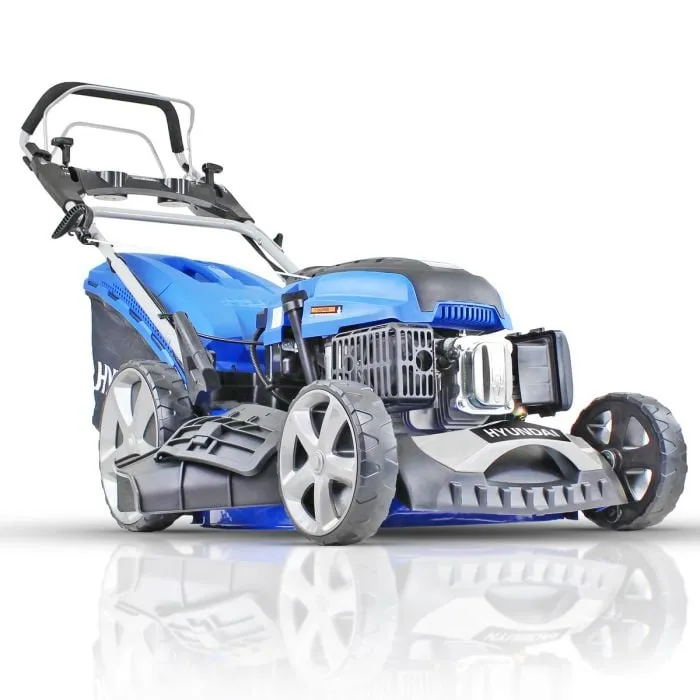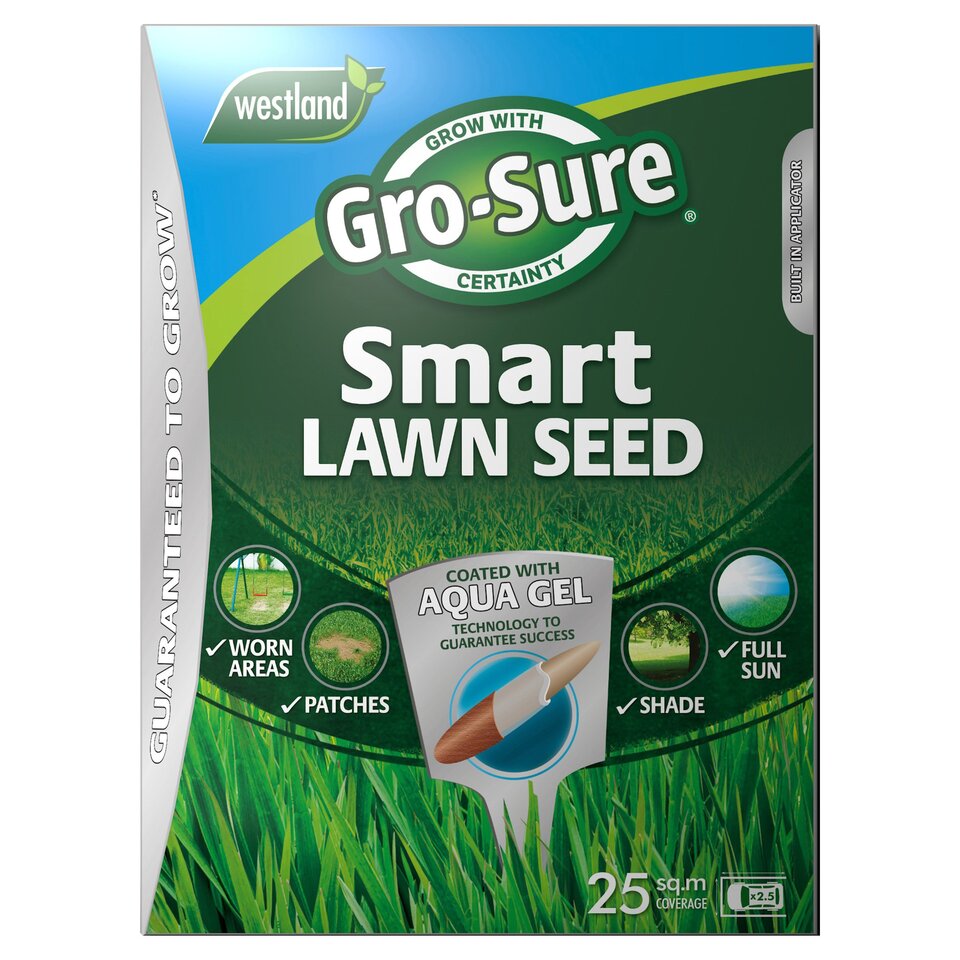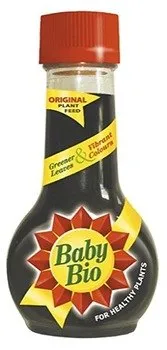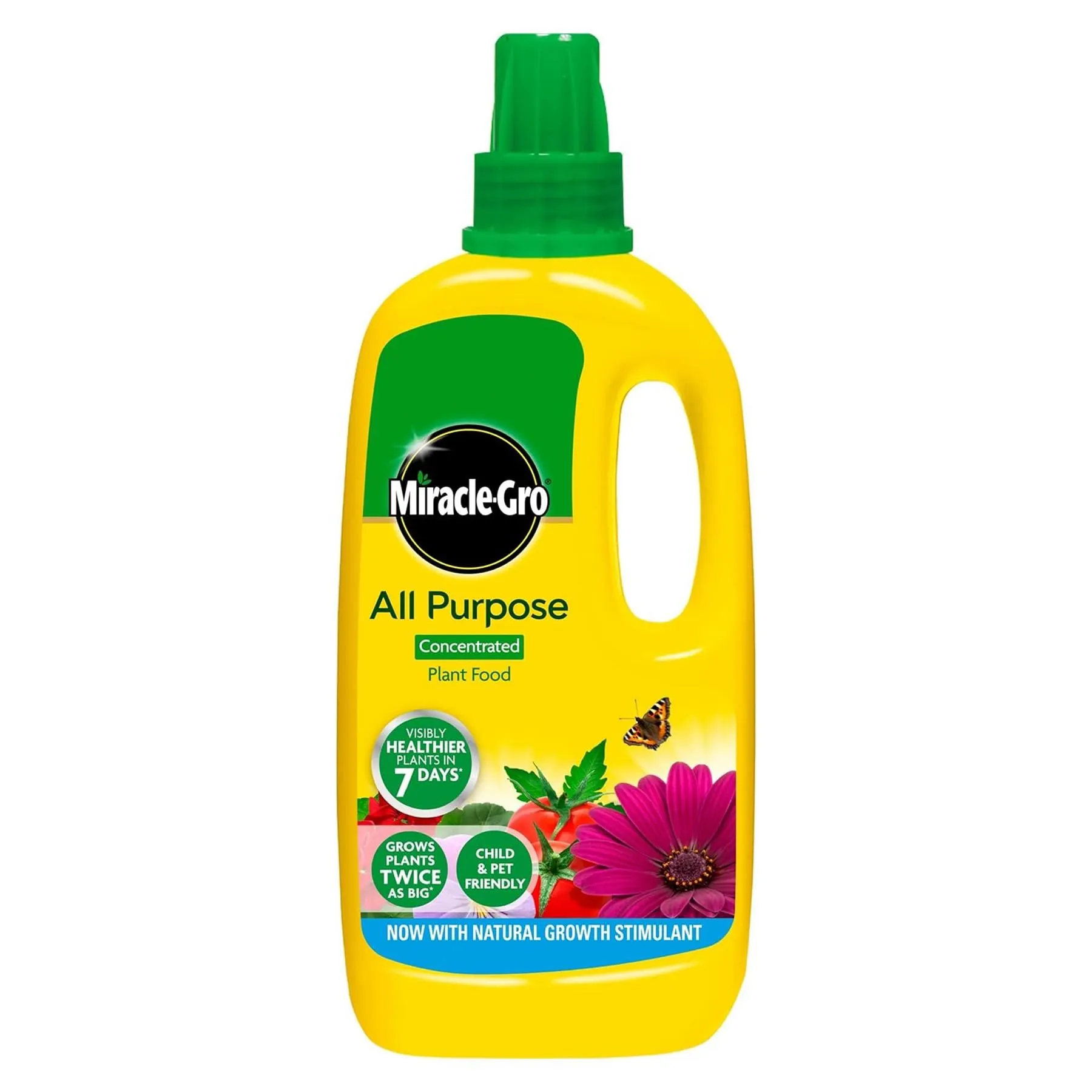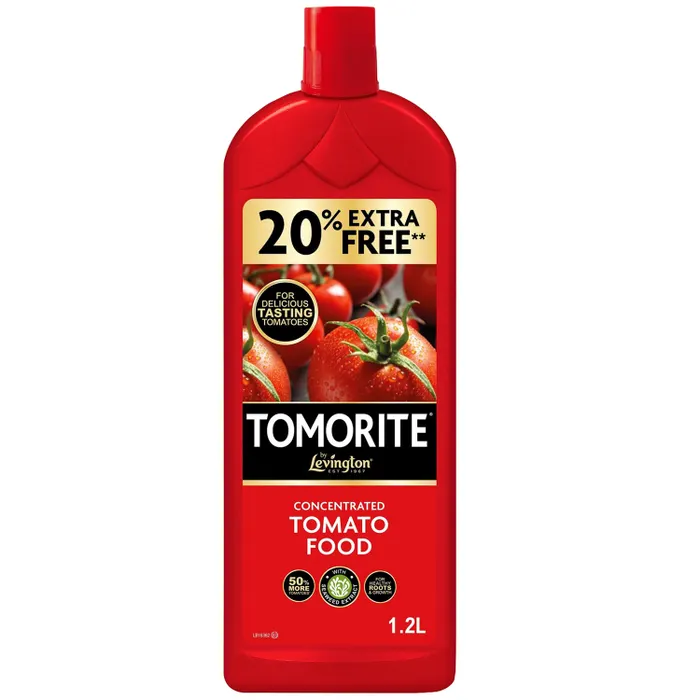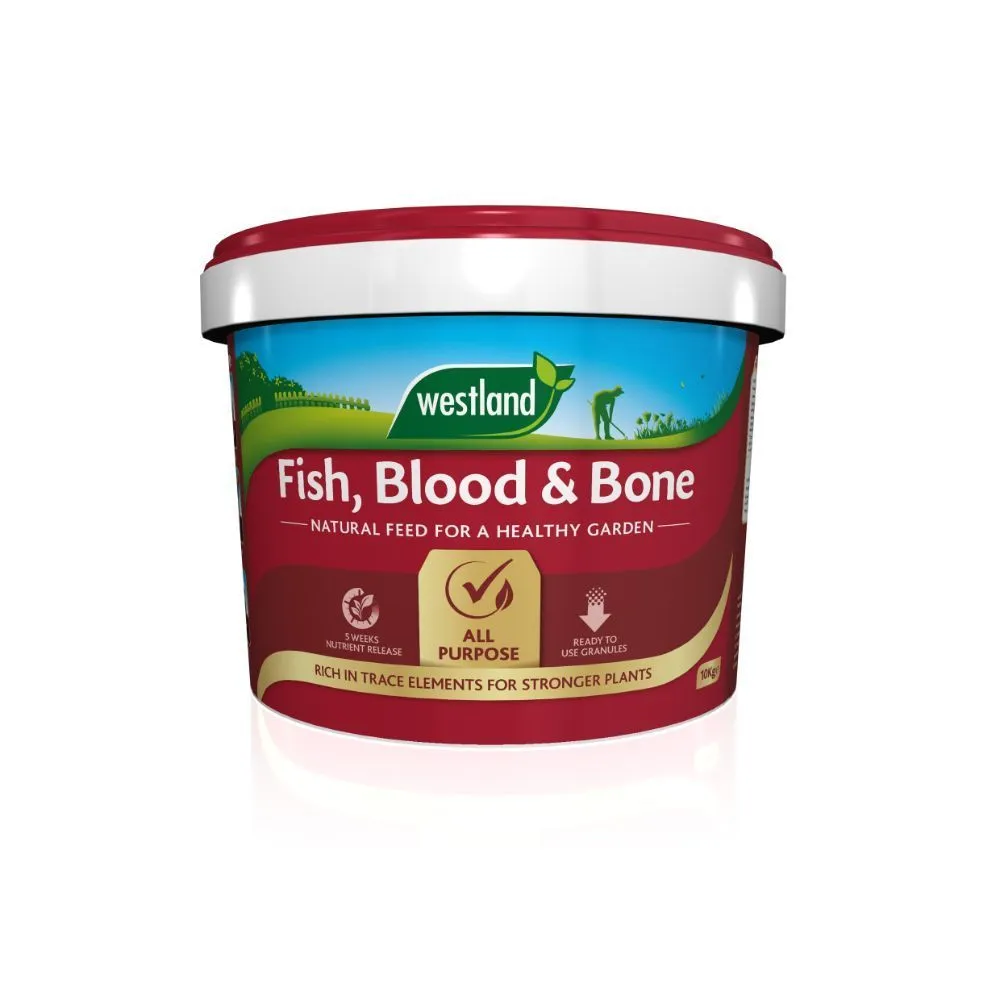Dealing with Mushrooms and Toadstools on Your Lawn
Judging by the number and content of many emails we get, not many gardeners realise the important and beneficial effect of most fungi - toadstools or mushrooms - that are to be found in the garden! But then, most fungi related queries are concerning Toadstools in the Lawn.
Yes, the quaint charm of a UK garden, with its lush grass, vibrant flowers, and... unexpected guests? Yes, I'm talking about those intriguing yet sometimes unwelcome visitors - mushrooms and toadstools. They sprout with a whimsical touch, dotting our lawns with their peculiar shapes and colors. But fear not, dear gardener, for these fungal friends are not foes but signs of a healthy, thriving ecosystem beneath your feet!
Before you declare war on every mushroom in sight, remember their presence is a hallmark of a healthy lawn. They contribute to nutrient cycling and soil health. Sometimes, letting nature take its course is not only the easiest solution but also the most beneficial for your garden's long-term vitality.
In the grand tapestry of gardening, mushrooms and toadstools add a layer of complexity and beauty, reminding us of the unseen networks that sustain life. By managing them thoughtfully, we nurture not only our lawns but the intricate web of life they support.
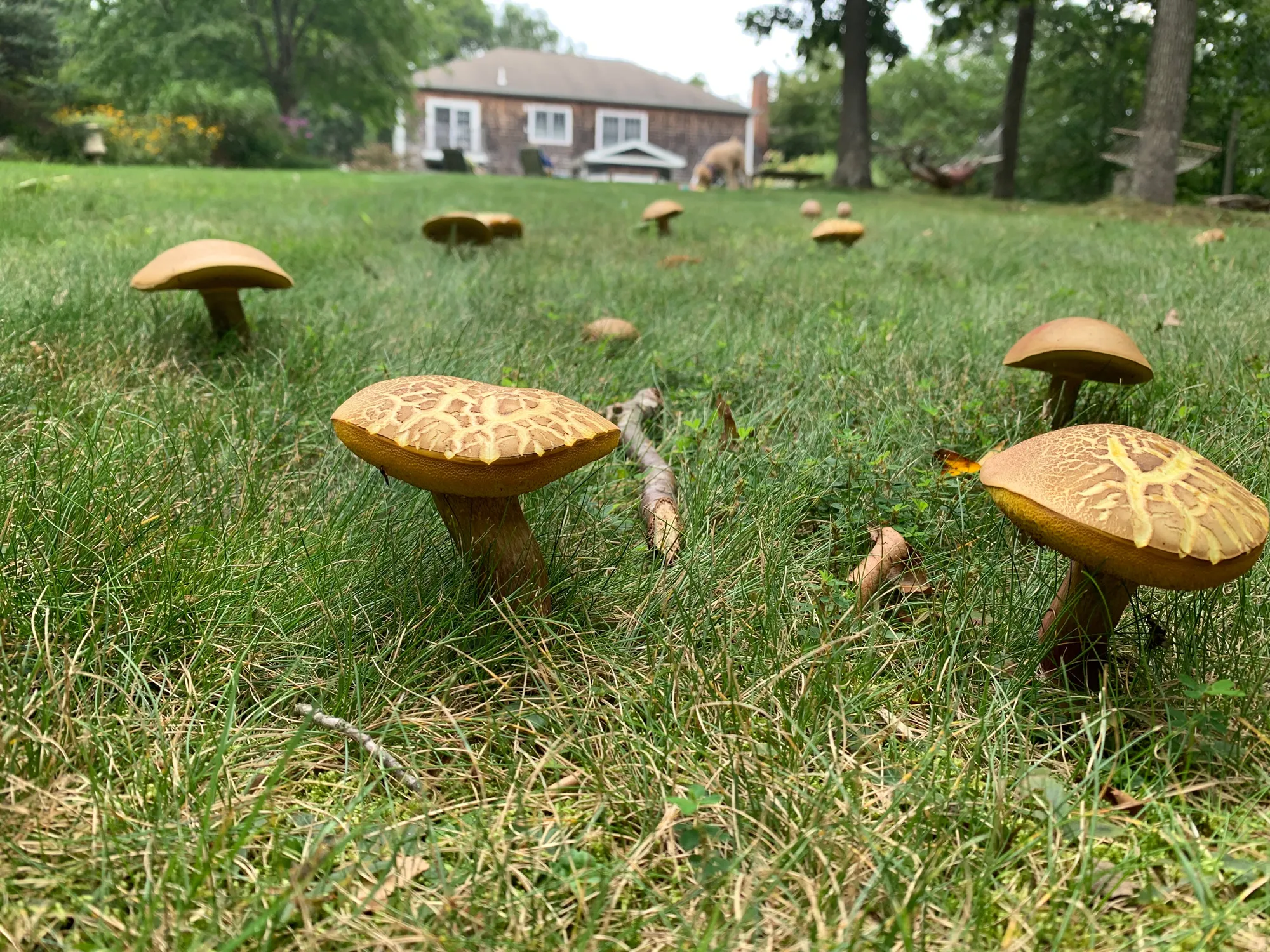
Why Mushrooms and Toadstools Pop Up in Your Lawn

Red toadstool poisonous mushroom, fly agaric fungi (Amanita muscaria)
For many gardeners and lawn care enthusiasts, the sudden appearance of mushrooms and toadstools amidst their green expanse can be both a curiosity and a nuisance. While they might seem out of place, these fungi play a vital role in your garden's ecosystem. Understanding why they appear and how to manage them can help maintain the health and beauty of your lawn.
The Role of Fungi in the Ecosystem
Fungi, including mushrooms and toadstools, are an integral part of the ecosystem. They act as decomposers, breaking down organic matter such as dead leaves, grass clippings, and wood, recycling them back into the soil. This process enriches the soil, making nutrients available to plants and maintaining the cycle of life in your garden.
Conditions Favouring the Growth of Lawn Fungi
Lawn fungi thrive in specific conditions, and understanding these can help you manage their presence. Here are the key factors that favour their growth:
- Moisture: Overwatering your lawn or extended periods of wet weather can create ideal conditions for fungi.
- Shade: Fungi prefer damp, cool environments often found in shaded areas.
- Organic Matter: Lawns with a lot of organic material, such as thatch or buried wood, will attract fungi.
- Poor Nutrition and Soil Compaction: Lawns that are not well-fed or have compacted soil lack the proper aeration and nutrients flow, creating an environment where fungi can flourish.
Organic Matter
Under many lawns, there are dead and dying tree roots, lawn 'thatch' and the like - or even leaf litter that has been taken down into the ground by earthworms. This is all eventually broken down by beneficial microscopic fungi - and in doing so, they release nutrients into the soil. So far so good!
The problem is, that these microscopic fungi normally produce 'fruiting' growths, by which means they multiply. The fruiting growths emerge in the lawn (and other parts of the garden) as toadstools!
They are the 'flower and seedpod' of the fungi. (That is botanically incorrect, but best describes the appearance of the toadstool above ground. (The microscopic fungi are the roots - the toadstools are the flower. I await the indignant emails from the botanists!)
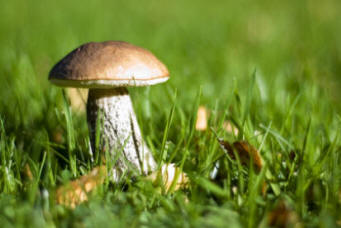
Insofar as visible fungi - Toadstools - in the lawn are concerned, then it is mainly the toadstools that make up Fairy Rings, that are harmful to the lawn.
Most toadstools - mushrooms - found in lawns are in fact performing a quite natural act - that of further decaying dead and rotting matter under the surface of the lawn. What we actually see - the toadstool or mushroom - is in fact the tip of the iceberg, with most of the activity related to the toadstool going on out of site, under the turf.
So, decaying organic matter under the lawn is basically the cause of the problem known as "Toadstools in my Lawn" which then materialise on the lawn's surface. As with flowers, the toadstools go on to produce spores which act as seeds, but can easily be blown by the wind to other parts of the garden.
In most other parts of the garden, the new toadstools which will then appear the following year or so are not a problem, for they are often hidden beneath the cover of shrubs or other garden plants. They can carry on their good (essential) work relatively unnoticed and not create a panic. It is only when they are visible in the lawn that they seem to create the panic emails that flood in!
Lawn Mushrooms: A Comprehensive Guide to Their Impact on Lawn Health and Safety
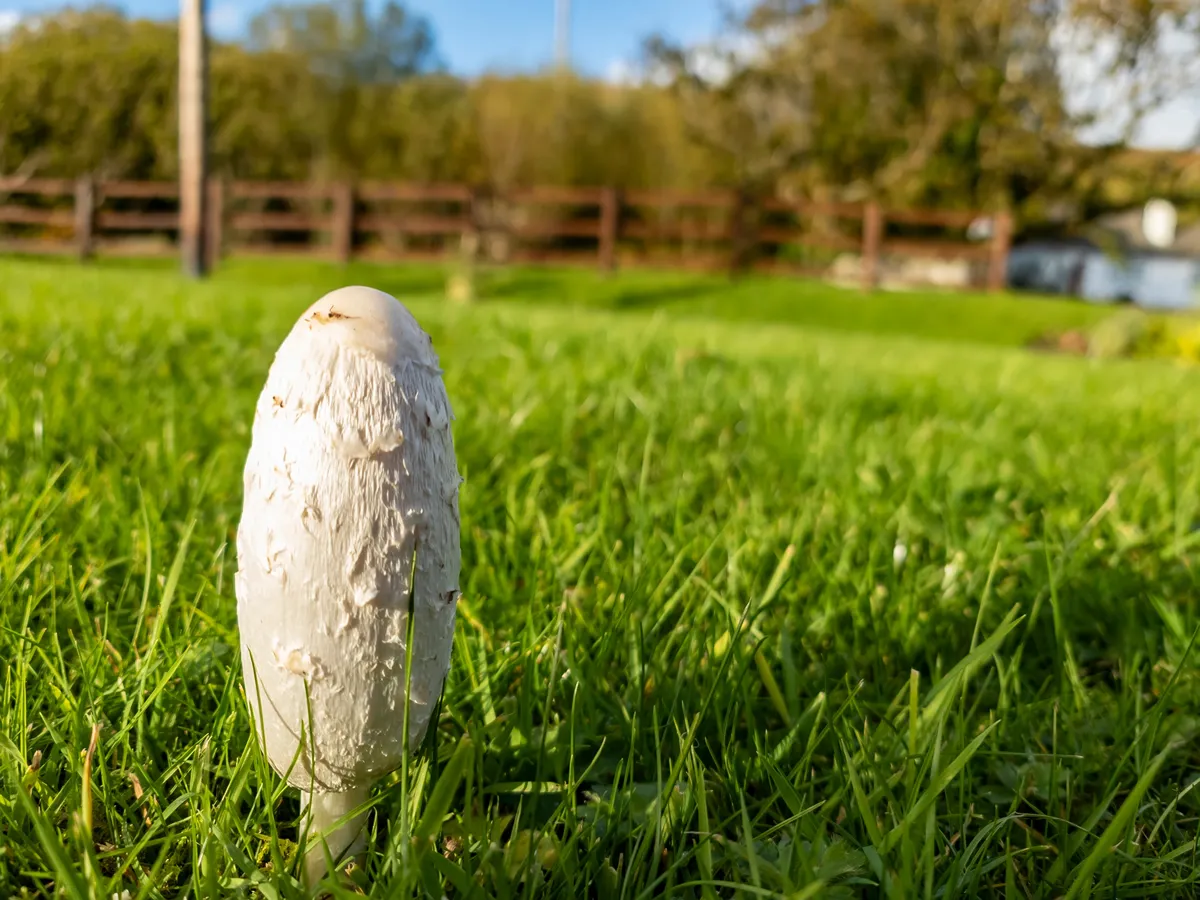
Coprinus comatus, also known as the shaggy ink cap, lawyer's wig, or shaggy mane, growing on a lawn in County Donegal, Ireland
Lush, green lawns are the pride of many homeowners, providing a tranquil and attractive setting for outdoor activities. However, the appearance of mushrooms in your lawn can prompt concerns about their effects on both lawn health and the safety of pets and children. Understanding the types of mushrooms that commonly appear in lawns and how they impact their surroundings is crucial for maintaining a healthy garden.
Common Types of Lawn Mushrooms
Three types of mushrooms frequently found sprouting in lawns are Fairy Ring, Ink Cap, and Puffball mushrooms. Each has distinct characteristics and effects on the lawn:
- Fairy Ring Mushrooms: Identified by the circular patterns they form on the grass, Fairy Ring mushrooms can create rings of dead grass in your lawn. While they may cause temporary unsightliness, these mushrooms do not cause permanent damage to the lawn.
- Ink Cap Mushrooms: These mushrooms are known for their ability to secrete a black liquid as they decompose. This fluid can be slippery and may stain surfaces, which could be a concern for homeowners.
- Puffball Mushrooms: Characterised by their globe-like shape, Puffball mushrooms are typically harmless to lawns. However, their presence can be an indicator of overwatering or poor lawn drainage.
Impact Analysis on Lawn Health and Safety
While most lawn mushrooms are not dangerous and primarily affect the aesthetic appeal of the lawn, they can provide valuable insights into your lawn's health and environmental conditions. Here is a closer look at how these fungi can influence lawn health and safety:
- Aesthetic Concerns: For many, the primary issue with lawn mushrooms is their appearance, which some may find unsightly, detracting from the overall look of the garden.
- Indicators of Lawn Conditions: The presence of mushrooms can signal underlying issues, such as overwatering, poor drainage, or the presence of organic material, which can be addressed to improve lawn health.
- Safety Considerations: Although the types of mushrooms mentioned above are generally not harmful to the lawn itself, it is crucial to prevent pets and children from ingesting any wild mushrooms. While the common lawn mushrooms discussed are not toxic, other dangerous varieties could potentially grow in similar conditions.
The lawn Toadstool is in fact not harming the lawn at all. Neither is the network of underground mycellium which is helping nature do its natural tasks. Nonetheless, generally the toadstools are not 'liked' when in the lawn.
The toadstools normally appear in damp periods - Autumn being a favourite time.
The good news is that the toadstools do not harm the lawn (unless they are forming fairy Rings). The bad news is, that there are no chemical treatments that will 'cure' the toadstools - which are often referred to as mushrooms, but they are NOT the normal edible mushrooms of the kitchen.
Are Lawn Mushrooms Poisonous? How to Identify and Deal with Unwanted Yard Fungi
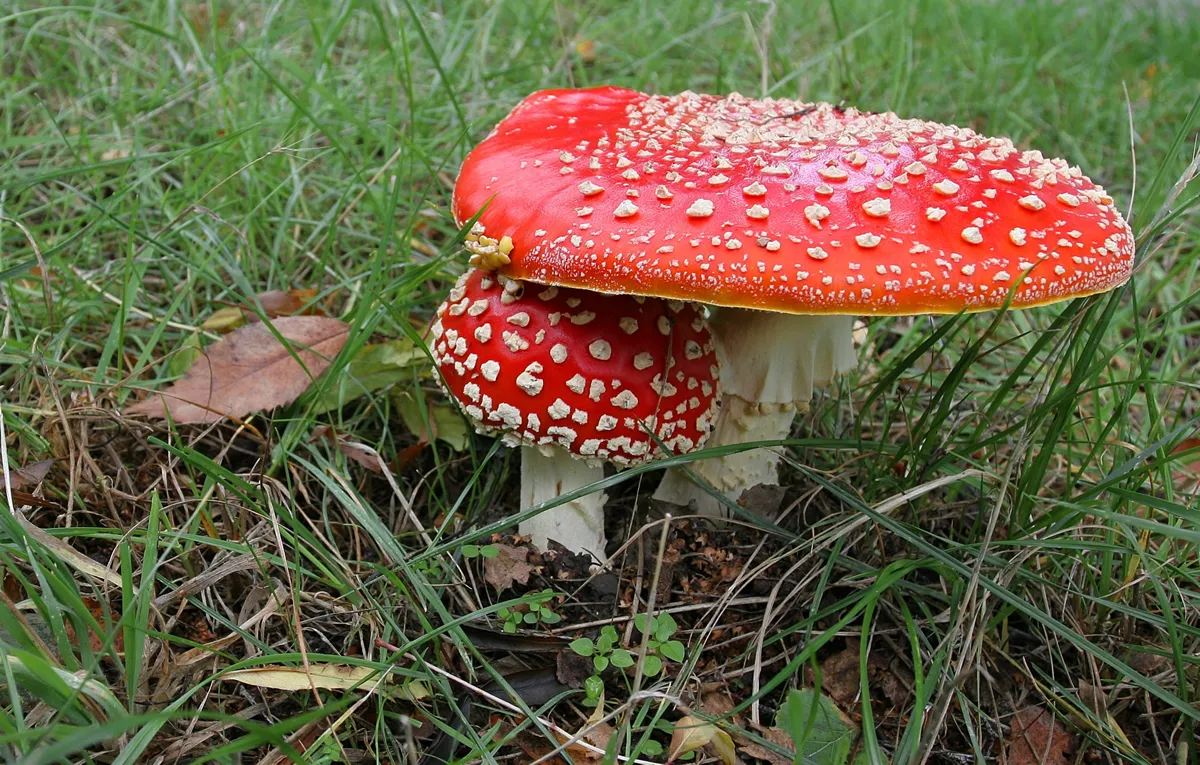
Two fly agaric Mushrooms, one shading the other. (Amanita muscaria)
Mushrooms in lawns have a certain magical quality, transforming a drab patch of greenery into a haven of fairytale enchantment. But with that charm also comes a concern, especially for households with pets and children – are the mushrooms growing in your backyard safe, or should they be regarded with caution? This is a question that often echoes through the minds of diligent homeowners and gardeners when they spot these fungal visitors.
In this comprehensive guide, we'll explore the complex world of lawn mushrooms. From the microscopic details that distinguish one variety from another to the medical consequences of an accidental ingestion, we'll cover everything you need to know about these fascinating fungi.
The Enigmatic World of Lawn Mushrooms
Whether you appreciate them for their ecological significance or view them solely as harbingers of yardwork, lawn mushrooms are a fascinating and diverse group of organisms. They are the visible fruiting bodies of vast underground networks known as mycelium, which perform vital roles in nutrient cycling and plant symbiosis.
Mushrooms can appear suddenly and in great numbers, adding to their enigmatic nature. Homeowners often express curiosity mingled with concern when mushrooms sprout in their lawns. After all, the word 'mushroom' is often associated with the danger of poisonous varieties. Our innate fear of the unknown, coupled with the legitimate need to ensure family and pet safety, prompts the question – which of these lawn mushrooms are safe, and which should we worry about?
Deciphering the Diversity
The first step in understanding these organisms is to appreciate their diversity. There are over 10,000 known species of mushrooms in North America alone, and identifying them isn't just a matter of knowing their appearance – it takes a trained eye and often requires details under the cap, in the gills, or even the spores' shape and color.
Safe vs. Suspect: A Visual Guide
Mushroom identification can be complex, but there are some general warning signs to distinguish dangerous species from the benign. Poisonous mushrooms often have distinctive features, such as brightly colored caps, that serve as a warning in the wild.
Common Features of Poisonous Mushrooms
- Bright or unusual colors: Especially mushroom caps that are red, yellow, or orange.
- Warts or scales: Spots on the cap that look like small bumps.
- Rings around the stem
- Veil remnants: If there is a partial covering on the cap, it can be a sign of a dangerous mushroom.
- Bulbous base: A swollen area at the bottom of the stem might indicate toxicity.
On the other hand, non-poisonous mushrooms tend to be more muted in color, have uniformly shaped, and often have a more familiar 'toadstool' look. But remember, these are general guidelines, and any mushroom should be handled with care and referred to an expert if in doubt.
Deadly Yard Visitors
Some mushrooms are common enough to become unwelcome guests in yards and pose a real threat if ingested. One such example is the aptly named "Death Cap" mushroom, which is responsible for the majority of fatal mushroom poisonings worldwide. It is highly toxic and resembles edible varieties, making it particularly dangerous. Another hazardous species, the 'Destroying Angel', also bears an innocuous appearance that belies its potent toxins. These and other deadly mushrooms can be found along with the more innocuous lawn species, so it's essential to be vigilant.
Keeping Your Lawn Pristine: The Ultimate Guide to Preventing Mushrooms

Wild mushroom growing in grass field. Psilocybe mushroom or Magic Mushroom or Buffalo dung Mushroom that bloom after rain in the Asian zone.
Effective Prevention Strategies
Now that we understand what causes mushrooms to grace our lawns, how can we prevent them from establishing and spreading their mycelial network?
Adjust Your Watering Regimen
- Frequent light watering: Instead, water deeply and infrequently to encourage grass roots to grow deep.
- Watering times: The best time to water is early in the morning to allow the grass to dry during the day.
Aerate and De-thatch
- Aerating tools: Use aeration to reduce compaction and allow water and air to penetrate the soil.
- De-thatching equipment: Regular de-thatching will minimize the accumulation of organic materials that mushrooms feed on.
Lawn Care to the Rescue
- Fertilize smartly: Apply the right fertilizers at the right times to improve grass health.
- Mow correctly: Adjust your mowing height to the recommended level for your grass species.
What to Avoid
Not all practices in lawn care are created equal when it comes to managing mushrooms. Here are the main missteps to sidestep:
- Over-watering: Causes the soil to stay too wet, offering the ideal conditions for mushroom growth.
- Practising poor mowing habits: Damages the lawn and creates additional stress that can make it more vulnerable.
Long-Term Management and Maintenance
Prevention is an ongoing process, and consistency is key in the battle against fungi on your lawn.
Maintaining Your Prevention Regimen
- Regular inspection: Keep an eye out for the early signs of mushroom development.
- Review and adjust: Over time, your lawn may need different care as it matures and changes.
Seasonal Strategies
- Fall preparation: Clear leaves to prevent them from matting down and creating moist environments for fungi.
- Winter practices: Keep the lawn clear of debris that can trap moisture and insulate the soil.
In Conclusion: A Mushroom-Free Future
By implementing a mix of prevention strategies and maintaining a vigilant care routine, you can keep your lawn looking its very best and free from fungal intruders.
Final Tips for a Beautiful Lawn
- Consistency is critical: Regular and correct lawn care practices will keep your grass healthy and strong.
- Be observant: Knowing your lawn will enable you to adapt your care to its changing needs.
- Look to the future: Your diligence will reward you with a fully mushroom-free, healthy lawn to cherish.
The Best Fungicides for Toadstools and Mushrooms
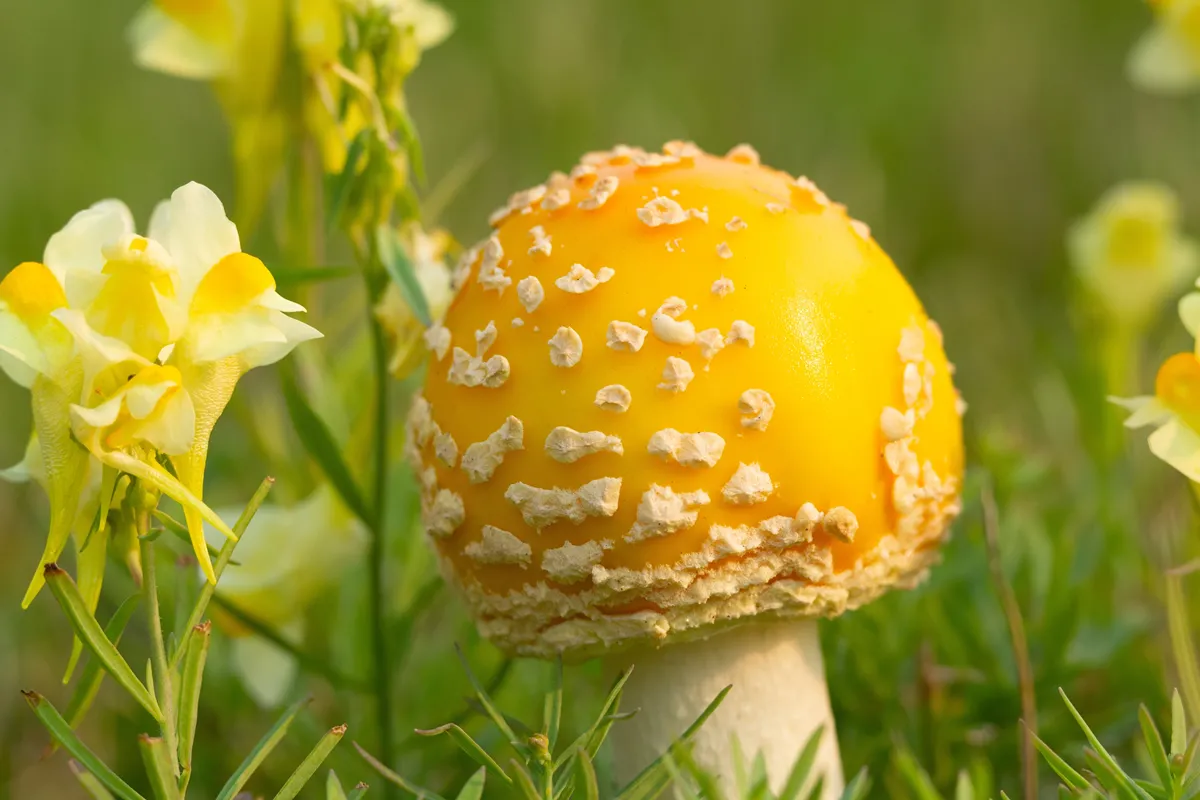
Cute and bright yellow mushroom Amanita muscaria (fky agaric) with round cap grows in green grass among yellow wildflowers Yellow toadflax.
While prevention is the primary tactic in fighting fungi, sometimes a direct approach is necessary. Fungicides are an effective tool to eliminate existing fungal infections and prevent future outbreaks, but it's important to choose the right product for your lawn.
The Science of Fungicides
When considering the elimination of these fungi, it's essential to note that direct action on the mushrooms themselves might not always be the answer. Fungicides, such as azoxystrobin or flutolanil, don't kill mushrooms directly but can be quite effective for larger outbreaks by targeting the fungal network from which these mushrooms sprout. This method of application ensures that you're addressing the root of the issue, quite literally, by disrupting the lifecycle of the fungus below the surface of your lawn.
Fungicides work by inhibiting the growth of fungi or killing them outright. They come in various formulations, including granules, liquids, and sprays, each with its own application methods and rates of effectiveness.
Product Reviews
1. Southern Ag Garden Friendly Fungicide
- Effectiveness: 4/5 - Demonstrates high efficacy against common lawn fungi.
- Application: Comes in an easy-to-use spray bottle.
- Safety: Follow all instructions carefully for safe application around children and pets.
2. GardenGuard Granules
- Effectiveness: 3/5 - Suitable for preventive measures and mild infections.
- Application: Broadcast spreader application makes it quick and convenient.
- Safety: Keep away from water sources and follow guidelines for children and pet safety.
3. SproutShield Liquid
- Effectiveness: 5/5 - Strong antifungal properties for stubborn infestations.
- Application: Ideal for use with any sprayer system for a comprehensive application.
- Safety: Exercise caution while applying and ensure proper protective gear.
Case Studies in Fungus Control
Real-life experiences can illuminate the path to effective treatment against fungi. Here are two different scenarios and the applications used to restore the health of these homeowners' lawns.
Ms. Green's Fungus Fiasco
Ms. Green noticed a patch of thin, brown grass that rapidly spread throughout her lawn. Upon investigation, she found fungal growth was the culprit. After thorough research, she applied BrandX Fungicide Spray, and within weeks, her lawn showed remarkable improvement with new green growth in previously infected areas.
The Johnson Family's Persistent Puffballs
The Johnson family struggled for months with giant puffballs that kept reemerging in their backyard. After consulting with a specialist, they started a regimen of SproutShield Liquid, managing to finally rid their lawn of the fungal infestation.
Conclusion: Your Garden's First Line of Defence
A healthy lawn is a source of pride and joy, and an integral part of what makes a house a home. By understanding the nuances of fungal growth, promoting preventative strategies, and knowing how and when to utilize fungicides, you can be proactive in maintaining your lawn's luscious appearance.
For UK gardeners, it's particularly important to remember that specific fungicides labeled for the treatment of toadstools and mushrooms in lawns might not be readily available due to regulatory restrictions. This emphasizes the importance of integrated pest management strategies, including maintaining proper drainage, reducing excess moisture, and aerating the soil to discourage fungal growth.
In summary, while the magical appearance of mushrooms and toadstools in your garden can be a sight to behold, managing their presence thoughtfully ensures the health and beauty of your outdoor sanctuary. Whether opting for specific fungicides like azoxystrobin or flutolanil or leaning towards natural remedies like vinegar solutions, the key lies in understanding and working with the natural processes of your garden.
Natural Remedies for Lawn Mushrooms: A Gardener's Guide
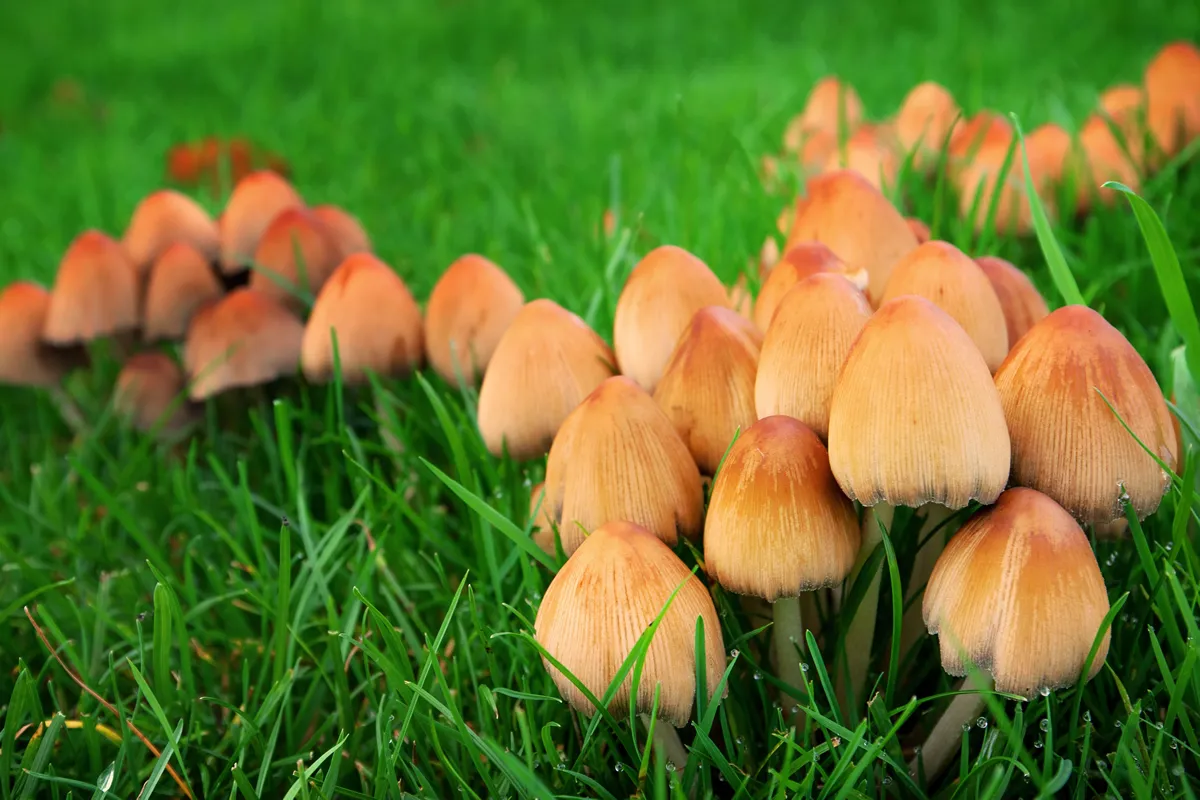
Marasmius oreades mushrooms on the green lawn, in the autumn
Mushrooms are often an unexpected, curious feature of a well-maintained garden. They can capture the imagination with their variety of shapes, colours, and sizes. However, when these fungi start to encroach upon our much-loved lawns, the charm can quickly turn to concern. For gardening enthusiasts, managing the sudden bloom of mushrooms in your meticulously tended grass can become a seasonal challenge. This guide is for those who appreciate the natural world but prefer their landscapes a little less fungal. We will explore various organic solutions to maintain a beautifully mushroom-free lawn, ensuring your garden remains a place of tranquillity and aesthetic satisfaction.
Identifying Lawn Mushrooms
Before we tackle the 'how' of removal, understanding the 'what' is essential. Not all mushrooms are created equal, and in the same way, different species have diverse impacts and invasiveness. Recognizing these fungi is the first step in grasping the nature of the problem. Our advice is to always take care when identifying mushrooms, as some can be toxic to humans or pets. Seek professional help if in doubt.
Recognizing Common Types
We commonly spot "fairy ring" mushrooms, often forming circular patterns on the lawn. They are localized bulbs of mycelium which cause green, lush circles. "Puffballs" and "ink caps" are transient types that often grow in mulch or new soil. "Creeping" or "burrowing" mushrooms are a nuisance as they can grow alongside roots and within the wood of trees.
The Role of Mushrooms in Your Lawn
Mushrooms and their underground mycelium networks play important roles in ecosystems. They aid in nutrient cycling, breaking down matter, and can even form symbiotic relationships with plant roots. However, in a domestic lawn, the balance can quickly tip when mushrooms start to outnumber the blades of grass. Here's where they can become problematic:
Indicators of Overgrowth
- Visual disturbance of a well-kempt lawn.
- Soil disruption or hazards when mowing.
- Decreased aesthetics and value of the landscaped area.
Natural Remedies for Lawn Mushrooms
Gardeners are increasingly turning to organic approaches for managing mushroom overgrowth, seeking environmentally friendly alternatives to harsh chemicals. Here are several strategies that can help reduce mushroom populations in your lawn:
Adjusting Watering Practices
Mushrooms thrive in humid environments, so adjusting the watering schedule can make the lawn less hospitable to them. Water early in the day to allow the grass to dry out, preventing the sustained moisture levels preferred by mushrooms.
Changing Soil pH
A soil pH test can reveal if your lawn is too acidic, which can encourage mushroom growth. By applying lime to raise the pH, you make the soil less fungal-friendly, promoting healthier grass and discouraging mushrooms.
Improving Drainage
Poorly draining soil can lead to persistently moist conditions, ideal for mushroom growth. Aeration and the addition of organic materials like compost can enhance water movement and prevent the pooling that mushrooms love.
Using Natural Fungicides
A handful of natural antifungal treatments, like neem oil or other plant-based fungicides, are effective against mushrooms. They are safe for your lawn and do not pose a threat to children or pets.
Removing Mushroom Food Sources
Mushrooms feed on decaying organic matter, so by regularly raking and removing dead leaves, grass clippings, and other debris from the lawn, you can starve them out. Be vigilant about yard waste and compost in a timely manner.
Preventing Future Mushroom Growth
An ounce of prevention is worth a pound of cure, as the saying goes. Once you've managed a mushroom problem, it's wise to implement measures that can keep your lawn looking pristine over time.
Consistent Maintenance
Regular mowing at the correct height, overseeding to fill in bare spots, and seasonal dethatching will all support a stronger, more resistant lawn, making it less likely for mushrooms to take hold.
Mulching Wisely
If you use mulch in garden beds, choose a type that resists fungal growth. Apply a thin layer and refresh as needed, ensuring mulch doesn't remain overly moist, which can turn it into a fungal nursery.
Ensuring Lawn Health
A vigorous lawn is the best defence against mushrooms. This means the right amount of nutrients, proper care, and avoiding stressors, like overwatering or compacted soil, that can weaken the grass.
When to Seek Professional Help
Some mushroom issues are more than a weekend warrior can handle. If you observe any of these signs, it may be time to call in professional support:
Widespread Overgrowth
If mushrooms persistently recur over large portions of the lawn despite your best efforts, there may be an underlying issue that needs diagnosing and treating by an expert.
Toxic Varieties
If you spot mushrooms that could be toxic, or experience unusual health impacts along with a mushroom bloom, seek medical advice and have your property inspected by a professional.
Ongoing Lawn Problems
If mushrooms are just one symptom of a larger lawn problem, such as a chronic wilting or discolouration of grass, it might be time to call a landscaper to investigate the health of your lawn.
Conclusion
The presence of mushrooms in a lawn can signal a rich, living ecosystem but can also challenge those of us aspiring to the perfect, homogeneous, green sward. By understanding the role of mushrooms, identifying their various forms, and employing natural remedies to address them, gardeners can achieve a balanced, healthy lawn that is both nontoxic and appealing. Engaging with prevention and maintenance, coupled with knowing when to bring in a pro, completes the gardener's circle of wisdom. And remember, a garden isn't just a place where things grow; it's a space for learning, observation, and joy. Your experience in tending to your outdoor paradise is invaluable, so share it with others, and continue the cycle of growth and discovery.
Safe mushroom removal from child and pet friendly lawns
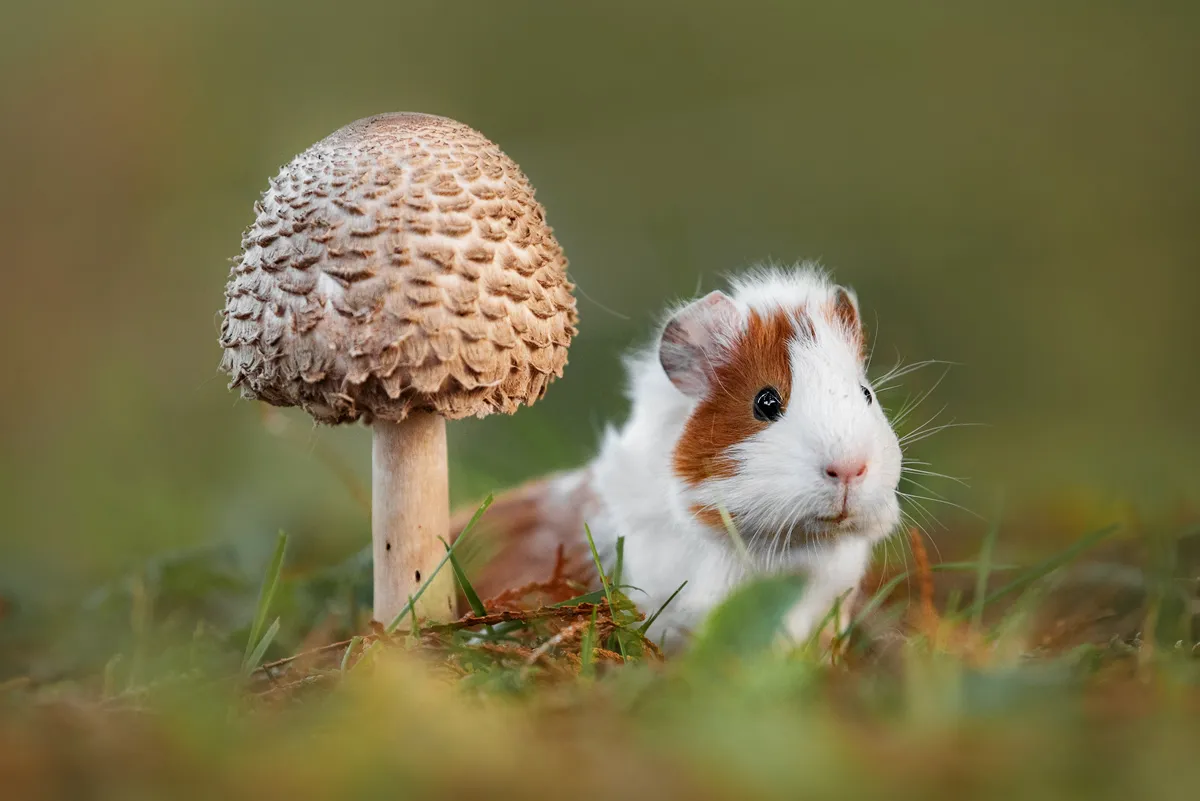
Little guinea pig sitting under a mushroom in autumn
Stepping into the realm of child and pet friendly lawns, we uncover a chapter that is both enchanting and vitally important. Imagine a lush, green canvas where little feet scamper, laughter fills the air, and every corner is an adventure waiting to unfold. However, amidst this idyllic setting, mushrooms occasionally spring up—an unsolicited mystery guest in your garden party. Fear not, for I bring you tales and wisdom on how to safely banish these fungi, ensuring your lawn remains a safe haven for the most precious of explorers.
The Fungal Enigma Unveiled
Mushrooms, the quaint umbrellas of the natural world, sprout as the visible signs of an invisible network beneath the earth, a kingdom of fungi working quietly in the shadows. These organisms are nature’s recyclers, breaking down organic matter into soil nutrients. Yet, when it comes to child and pet friendly lawns, our mission transcends beyond understanding, venturing into the realm of safe and gentle removal.
Chapter 1: Nature’s Own Solutions
In the quest to maintain the sanctity of our child and pet friendly zones, we turn to the gentlest methods first. Start with manual removal—equip yourself with gloves, and under the cloak of dawn or dusk, pluck these mushrooms from their earthen bed. Remember, this is but a temporary solution; the hidden mycelium below awaits its next cameo.
Chapter 2: The Tale of Soil and Sunlight
To thwart the resurgence of these fungal protagonists, we must look deeper into the heart of our gardens. Aeration becomes our ally here. By piercing the soil's surface, we invite sunlight to penetrate the ground's depths, disrupting the moist, shadowy retreats mushrooms favor. Coupled with improved drainage, we ensure water no longer lingers as an invitation to fungal feasts.
Chapter 3: The Organic Guardians
In our narrative, chemicals play a supporting role, not the lead. For those seeking guardians in organic forms, consider concoctions that dissuade rather than destroy. A solution of water and baking soda, applied with care, whispers to the mushrooms that it's time to retreat, without harming the grass or the tender hands that may soon grace it.
Chapter 4: The Wisdom of Prevention
Our story would be incomplete without speaking of prevention— the true hero of our tale. Regularly remove lawn thatch and debris, the secret realms where fungal spores find sanctuary. Ensure your lawn is not a damsel in distress; overwatering can be as harmful as neglect. An evenly moisturized lawn stands resilient against the fungal folklore.
Epilogue: The Sanctuary Preserved
In the grand tapestry of gardening, mushrooms are but a thread that adds depth and texture to our understanding of this living, breathing world beneath our feet. By choosing methods that respect the delicate balance of nature, we write our own stories of magical realms where children play, unburdened by worry, in lawns that are safe, green, and vibrant.
May your garden flourish, and may the only adventures sprung upon you be those of joy, discovery, and the endless wonder of nature’s bounty.
When to Seek Professional Help
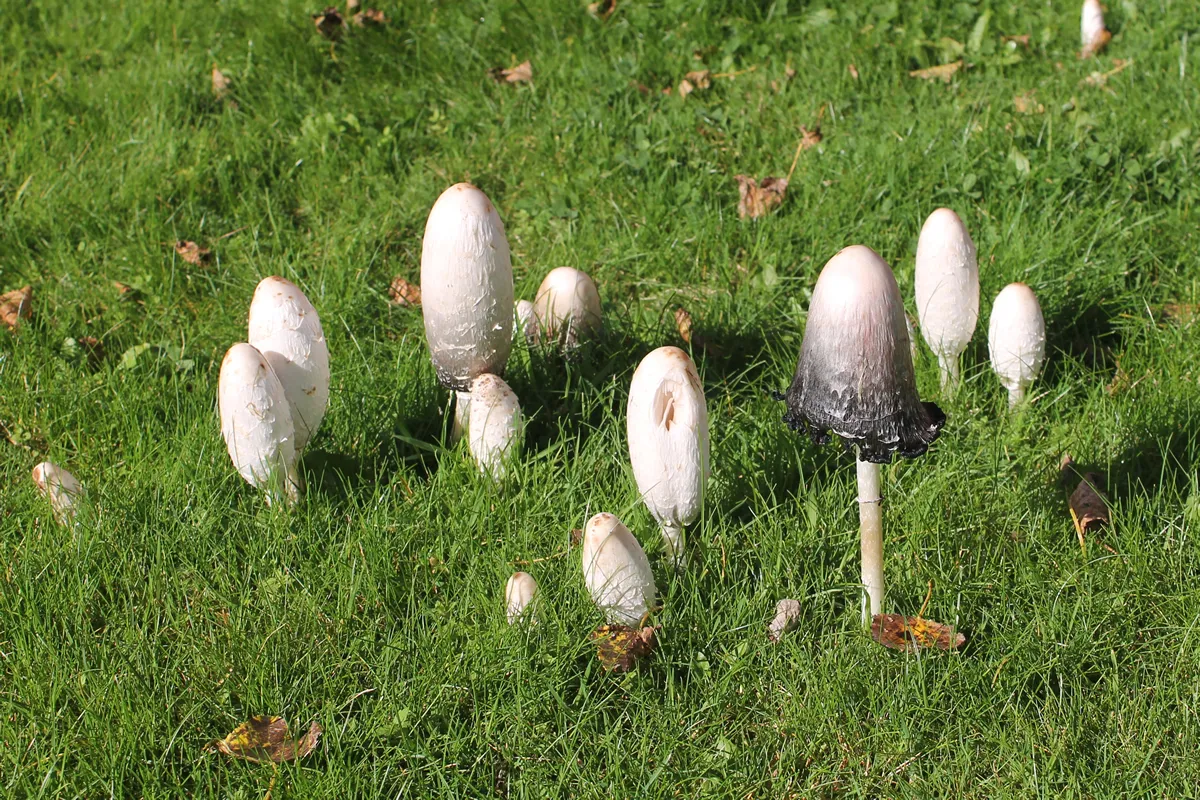
Shaggy Ink Caps in a field in Devon.
Some mushroom issues are more than a weekend warrior can handle. If you observe any of these signs, it may be time to call in professional support:
Widespread Overgrowth
If mushrooms persistently recur over large portions of the lawn despite your best efforts, there may be an underlying issue that needs diagnosing and treating by an expert.
Toxic Varieties
If you spot mushrooms that could be toxic, or experience unusual health impacts along with a mushroom bloom, seek medical advice and have your property inspected by a professional.
Ongoing Lawn Problems
If mushrooms are just one symptom of a larger lawn problem, such as a chronic wilting or discolouration of grass, it might be time to call a landscaper to investigate the health of your lawn.
Conclusion
The presence of mushrooms in a lawn can signal a rich, living ecosystem but can also challenge those of us aspiring to the perfect, homogeneous, green sward. By understanding the role of mushrooms, identifying their various forms, and employing natural remedies to address them, gardeners can achieve a balanced, healthy lawn that is both nontoxic and appealing. Engaging with prevention and maintenance, coupled with knowing when to bring in a pro, completes the gardener's circle of wisdom. And remember, a garden isn't just a place where things grow; it's a space for learning, observation, and joy. Your experience in tending to your outdoor paradise is invaluable, so share it with others, and continue the cycle of growth and discovery.

